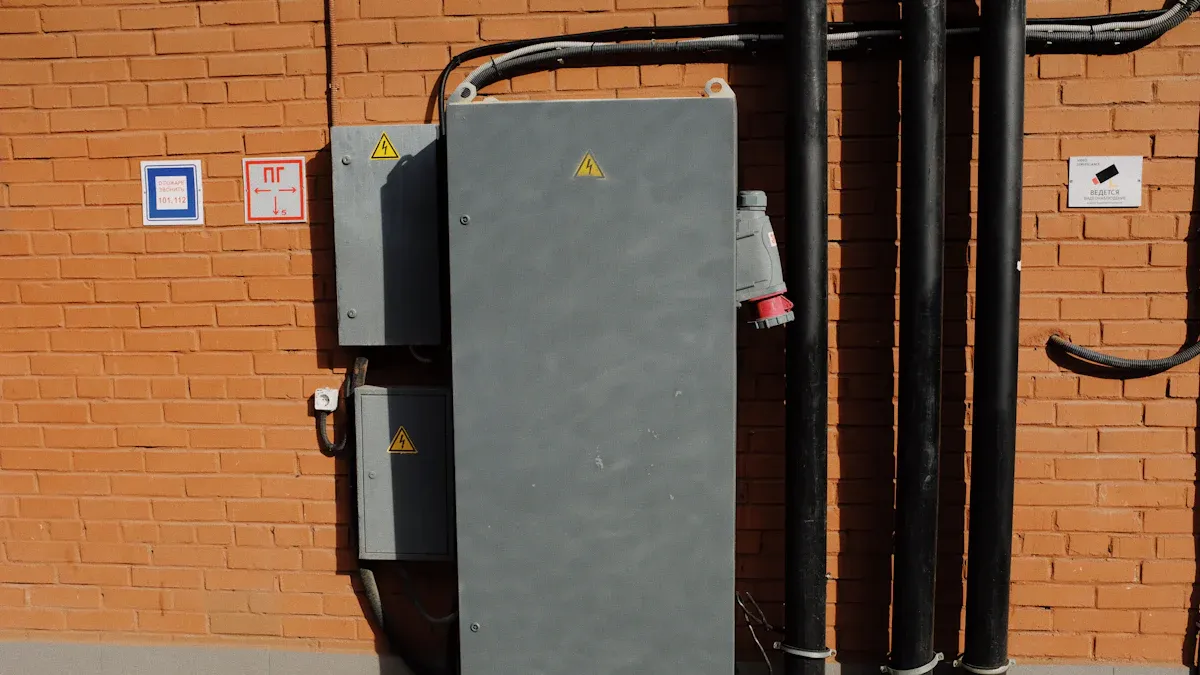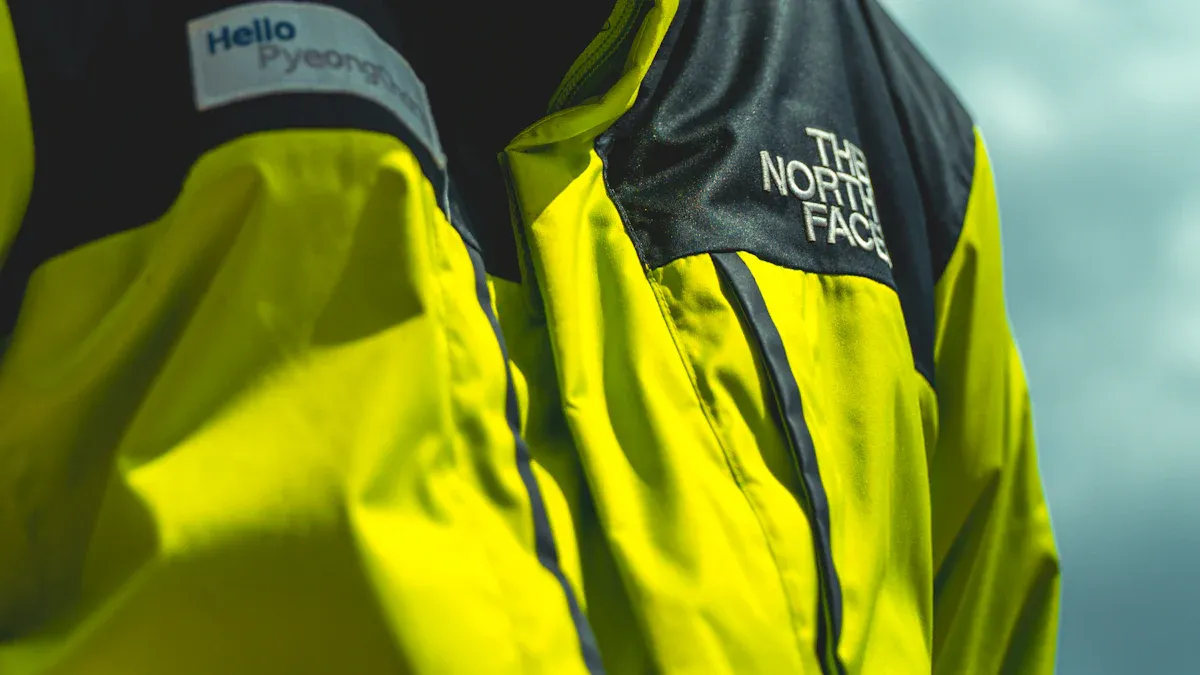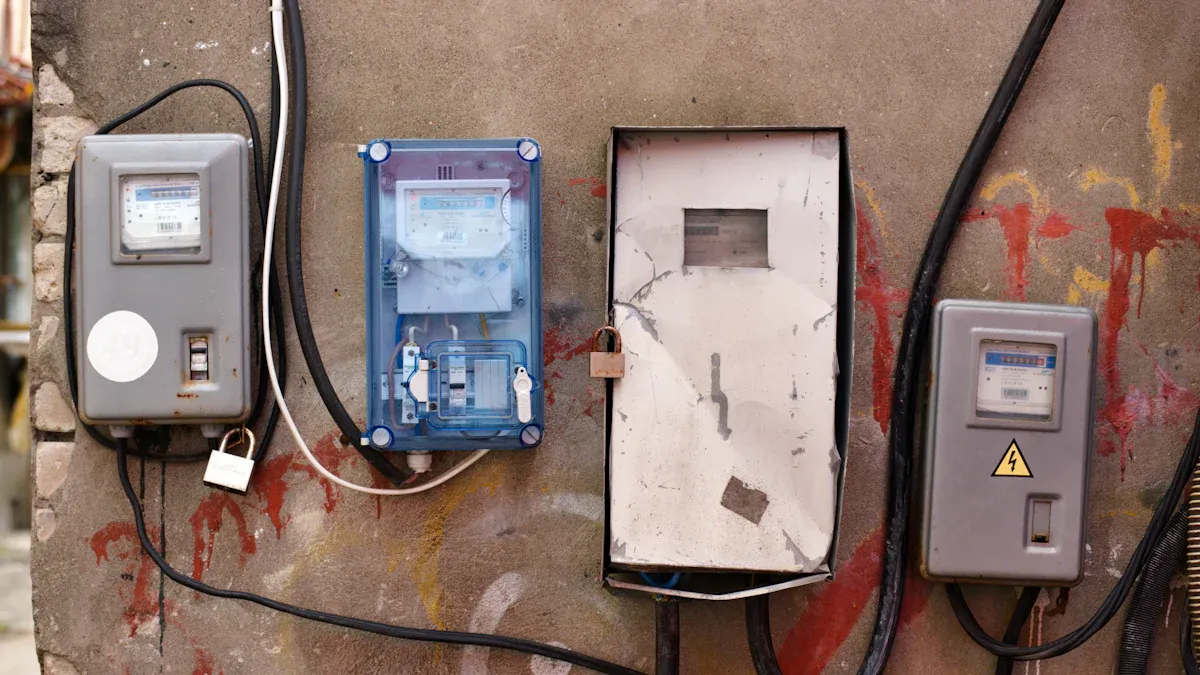Weatherproof Light Box Construction: IP Ratings, Materials, and Protection Systems for Extreme Conditions

You need strong protection when you build a weatherproof light box. This is important for extreme conditions. Picking the right safety standards keeps outdoor lighting safe. It also makes sure your lights work well. Weatherproof electrical boxes stop water and dirt from getting inside. This helps your electrical parts last longer. It also keeps your lighting safe. Many outdoor lighting projects need strict safety rules. These include outdoor outlets, switches, and floodlights. These rules help keep electrical safety and lighting strong.
Application Type | Description |
|---|---|
Outdoor Lighting | Keeps light fixtures safe from weather. Used with security lights and floodlights. |
Outdoor Outlets | Gives power to outdoor tools and lights. Has covers to keep out rain and dirt. |
Outdoor Switches | Turns lights and fans on and off. Protects against rain, snow, and dirt. |
Floodlights and Security Lights | Used for safety and decoration outside. Good for gardens and yards. |
Key Takeaways
Pick weatherproof light boxes to keep outdoor lights safe. They protect lights from rain, snow, and dirt. This helps your lights work in any weather.
Check for an IP rating of at least IP65. Higher ratings like IP66 or IP67 give more protection from water and dust.
Choose materials carefully. Stainless steel and aluminum do not rust. They can handle tough weather. Plastics like ABS and polycarbonate are light and strong.
Look at your weatherproof light box often. Check for cracks, rust, and seals. Finding problems early saves money on repairs.
Do not make mistakes like picking the wrong NEMA rating. Do not forget UV protection for plastic boxes. Good choices keep your lights safe and working.
Weatherproof Light Box Basics
What Is a Weatherproof Light Box
A weatherproof light box helps protect outdoor lights. It keeps wires and connections safe from rain and snow. Dust cannot get inside the box. You use these boxes for lights outside. Water and dirt can cause problems if they get in.
Weatherproof boxes are made for outside.
They keep wires dry and clean.
They stop water and dirt from getting in.
You can use them for lights in gardens, yards, or parks.
A weatherproof light box gives a safe place for wires. It helps your lights work, even when the weather is bad.
Key Features for Extreme Conditions
You need special features for outdoor weatherproof boxes. These features help your lights last longer. They also help your lights work better. The table below shows what to look for:
Feature | Description |
|---|---|
Weather Resistance | Rated to withstand heavy rain, snow, and extreme temperatures, ensuring operational reliability. |
Impact Resistance | Robust design to endure impacts from outdoor activities, protecting the electrical components. |
Locking Mechanisms | Deters unauthorized access, enhancing safety in public or communal areas. |
Pick a box that keeps out water, dust, and strong hits. Good boxes use seals and tough materials to block water. They also keep wires safe from damage. Some boxes have locks to stop people from messing with your lights.
Tip: Always check if your box is waterproof and weatherproof before you put it in. This helps your lights stay safe and work well outside.
A weatherproof light box keeps your lights safe and dry. It helps your lights work, even in storms or very hot or cold weather.
Ingress Protection Rating (IP)

Understanding IP Ratings
You need to know how the ingress protection rating works before you choose weatherproof boxes for outdoor use. The rating tells you how well an enclosure keeps out dust and water. You see the letters "IP" followed by two numbers. The first number shows how much protection you get against solid objects like dirt or tools. The second number shows how much protection you get against water.
Code letters | First Digit | Second Digit |
|---|---|---|
IP | 0–6 or X | 0–9 or X |
Solid particle protection | Liquid ingress protection |
The first digit means solid particle protection. The second digit means liquid ingress protection. For example, if you see IP67, the box keeps out dust and can handle being under water for a short time.
Note: The IP rating helps you pick the right weatherproof light box for your needs. You can check the numbers to see if the box meets your standards for safety and durability.
IP ratings give you a clear way to compare weatherproof boxes. You can see which boxes keep out water and dust best. This helps you avoid problems with your electrical equipment. You keep your lights working longer and safer.
Choosing the Right IP for Weatherproofing
You want your weatherproof boxes to last in tough weather. You need to look at the rating numbers closely. Here is a table that shows how different IP ratings protect your electrical enclosures:
IP Rating | Dust Protection | Water Protection |
|---|---|---|
IP65 | Dust-proof | Low-pressure water jets |
IP66 | Dust-proof | Strong water jets |
IP67 | Dust-proof | Temporary immersion (1m for 30 mins) |
IP68 | Dust-proof | Continuous immersion (greater depths) |
IP69K | Dust-proof | High-pressure and steam cleaning (not submersible) |
You should use weatherproof boxes with at least IP65 for outdoor light boxes. This rating keeps out water jets and dust. If you live in a place with heavy rain or snow, you may need IP66 or IP67. These ratings give better protection against strong water or short-term flooding. IP68 works best for places with flooding or very wet conditions. IP69K is good for areas that need cleaning with high-pressure water.
IP ratings help you pick the right weatherproof box for your electrical needs.
You lower the risk of equipment failure when you use the right rating.
You save money on repairs and keep your lights working longer.
You also see NEMA ratings on some weatherproof boxes. NEMA ratings are common in the United States. IP ratings are used more in Europe. Both standards show how well a box keeps out water and dust. Here is a table that compares them:
NEMA Rating | IP Rating | Description |
|---|---|---|
NEMA 4 | IP65 | Both keep out water and dust. Good for outdoor use. |
NEMA 1 | IP20 | Only keeps out solid objects. Not good for wet areas. |
Tip: Always check the standards for your area. Pick a weatherproof light box with the right rating for your weather and safety needs.
You protect your electrical equipment when you choose the right rating. You keep your weatherproof boxes working in rain, snow, and dust. You make sure your lights stay safe and reliable.
Materials for Waterproof Outdoor Electrical Boxes

Metal Options (Stainless Steel, Aluminum)
It is important to pick the right material for waterproof electrical boxes. Metals like stainless steel and aluminum give strong protection outside. These metals help keep your electrical parts safe from water and bad weather.
Here is a table to compare aluminum and stainless steel:
Feature | Aluminum | Stainless Steel |
|---|---|---|
Weight | Lightweight, easy to handle and install | Heavier, needs more support during installation |
Corrosion Resistance | Resists moisture, may need coating in harsh areas | Good resistance, may need extra protection in coastal areas |
Thermal Management | Excellent heat dissipation | Superior heat resistance |
Impact Resistance | Deforms under impact, absorbs energy | Rigid, less likely to deform but can crack |
Cost | Less expensive upfront | Higher initial cost, lower maintenance over time |
Application Scenarios | Best for lightweight, portable uses | Best for heavy-duty, corrosive environments |
Aluminum is a good choice because it is light and simple to put in. It does not rust easily but can get chalky spots after a while. Stainless steel looks shiny for a long time and is very tough. It can handle bad weather and keeps your lights safe from harm. In places near the ocean, stainless steel might need extra care because salt can cause rust.
Tip: Pick stainless steel if there is a lot of water or chemicals. Use aluminum if you want a box that is light and easy to move.
Plastics and Composites (ABS, Thermoplastic)
Plastics and composites give you more options for waterproof boxes. ABS and thermoplastic are often used to make weatherproof boxes. These materials keep your electrical parts safe from dust, water, and bumps.
Material | Impact Resistance | Weatherproofing |
|---|---|---|
ABS | Excellent | NEMA-rated for dust and moisture protection |
Thermoplastic | Varies (Polycarbonate is best for rugged use) | IP65 rated for outdoor protection |
ABS boxes are light, strong, and last a long time. They protect well against bumps and bad weather. NEMA-rated ABS boxes keep out dust and water. Polycarbonate, a kind of thermoplastic, is best for places where things get hit a lot. It is tough but may not last as long in the sun.
ABS does not do well in sunlight. The sun can make it fade and break faster. Polycarbonate and fiberglass are better if you need something that can handle the sun. Fiberglass can lose color but stays strong and works well.
ABS boxes work for most outdoor lights.
Polycarbonate is better if things get hit a lot.
Fiberglass is good for places with lots of sun.
Material Performance in Harsh Weather
You want your weatherproof boxes to last in tough weather. How well each material works depends on how it handles sun, heat, cold, and rust. Good materials keep your lights safe and working.
Material | UV Resistance | Temperature Resistance | Notes |
|---|---|---|---|
Aluminum | High | Excellent | Durable and resists environmental factors. |
Stainless Steel | High | Excellent | Offers long life and protection against harsh conditions. |
Polycarbonate | Moderate | Moderate | Can bleach and weaken over time. |
Fiberglass | High | Good | UV-resistant, may bleach but stays strong for years. |
Plastic boxes like ABS and polycarbonate do not rust and keep water out. They keep your electrical parts dry. You should check if the plastic is made for outdoor use. Metal boxes need special coatings to stop rust. Aluminum and stainless steel both handle sun and temperature changes well. They keep your lights safe in hot, cold, or wet weather.
Note: Strong materials protect your waterproof boxes from heat, dust, and water. They also help stop people from messing with your lights.
Always pick the right material for your weatherproof needs. For tough outdoor lighting, use strong, seamless boxes. These keep out dirt, dust, and water. They also help your electrical parts stay safe and work well.
Polycarbonate, fiberglass, aluminum, steel, and stainless steel are the strongest materials for weatherproof light boxes.
Boxes made from these materials keep your lights safe from water and bad weather.
You make things safer and stronger when you pick the best material for your waterproof boxes.
Weatherproof Protection Systems
Seals and Gaskets
Strong seals and gaskets help keep water and dust out. They protect your outdoor electrical boxes from damage. Gaskets are important for keeping moisture and dirt away from wires. The right gasket material makes a tight seal that lasts a long time. This matters for both indoor and outdoor lights.
Gaskets are good for tricky seals with lots of shapes.
Pick the right thickness and how much the gasket gets squeezed.
Custom gaskets fit your box well, so you do not need to use standard sizes.
Seal every seam and opening on your box. Many boxes come with gaskets already in place to stop water. You can also put sealant around holes and where wires go in for extra safety.
Tip: Always check your seals to make sure they are not broken. If a gasket is damaged, water can get in and hurt your lights or wires.
Enclosure Design
How your light box is built changes how well it keeps things safe. Most plastic weatherproof boxes have an IP rating of at least 65. This rating is good for outdoor lights that do not go underwater. A silicone gasket in a groove makes a tight seal when you close the lid. Hinged lids and double latches help keep the seal strong.
A tight seal keeps rain, dust, and other things away from your electronics. Think about what materials you need and how much weather your box will face. Good design helps your box last longer and keeps your lights safe.
Mounting and Fasteners
You need the right mounting and fasteners to keep your boxes safe. Pick fasteners that work well in the weather outside. Make sure the fastener material matches your box and where you put it.
Use fasteners that do not rust and can handle rain and sun.
Use the right tools and tighten fasteners enough to keep water out.
Think about how much weight and force your fasteners will handle, especially if it is windy or wet.
If you install your box the right way, it stays sealed and your lights stay safe. Always put boxes above the ground and use sloped pads so water does not collect around your wires.
Selecting the Right Weatherproof Solution
Matching IP, Materials, and Protection
You want your outdoor lights to last a long time. You need to pick the right IP rating, materials, and protection for your boxes. Different places need different levels of waterproof and dustproof safety. The table below shows what kind of box works best for each place:
Environment Type | Solid IP Rating | Liquid IP Rating | Recommended IP Rating |
|---|---|---|---|
Dusty environments | 5 - 6 | Not critical | 5 - 6 |
Wet environments | Not critical | 5 - 8 | 5 - 8 |
Both dusty and wet | 5 - 6 | 5 - 8 | 55 - 68 |
If you put lights in a dusty spot, use boxes with a solid IP rating of 5 or 6. For wet places, pick a liquid IP rating between 5 and 8. If you have both dust and water, use boxes with IP55 to IP68. Always look at the material. Stainless steel and aluminum are good for tough weather. Polycarbonate and fiberglass work well in strong sunlight. When you match the right IP rating and material, you keep your electrical parts safe and lower the chance of damage.
Note: If you pick the wrong IP rating or material, your box can break quickly. You might have electrical trouble, safety problems, and spend more money fixing or replacing things.
Common Mistakes to Avoid
People sometimes make mistakes when choosing weatherproof boxes for outdoor lights. You can stop these problems if you know what to watch for:
Some people use the wrong NEMA rating, like NEMA 12 instead of NEMA 4 or 4X, for waterproof boxes.
Others forget to check if plastic boxes are UV stabilized. Sunlight can hurt plastics that are not UV safe.
Many skip adding vents for heat. This can make electrical parts get too hot.
Some do not look for mounting spots inside the box. They drill extra holes and break the waterproof seal.
Others ignore the best ways to mount boxes to walls or equipment. This can let water get inside.
When you pick weatherproof boxes, think about more than just waterproof ratings. You also need to think about hot and cold weather, sunlight, and chemicals. If you do not, your lights and electrical parts might stop working. Bad choices can cause safety risks, more repairs, and lots of replacements. You keep your outdoor lights safe and working well when you avoid these mistakes.
Weatherproof Maintenance Tips
Routine Inspection
You need to check your weatherproof light box often to keep your outdoor lighting safe and working. Regular inspection helps you find problems before they get worse. Follow these steps to make sure your electrical box stays in good shape:
Look at the outside of the box for cracks, rust, or any damage. Even small cracks can let water in and break the weatherproof seal.
Check the gaskets and seals around the cover. Make sure they are not broken and that they press tightly against the box.
Open the box and look for signs of water, like moisture, corrosion, or white mineral spots inside.
Inspect all wire connections. They should be tight and free from rust or green buildup.
Make sure all mounting screws are tight. Check that the conduit connections are still sealed and watertight.
Clean off any dirt, leaves, or plants that have built up around the box. This keeps the area dry and helps the weatherproof features work better.
Tip: Always check your box after heavy rain or storms. Early action can stop bigger electrical problems later.
Troubleshooting Issues
Sometimes, even with good care, you may face problems with your weatherproof light box. Here are some common issues and how you can fix them:
Lights will not turn on: Check for burnt-out bulbs, broken timers, or damaged wires inside the electrical box.
Flickering lights: Make sure all connections are tight. Loose wires or voltage changes can cause flickering.
Lights are too dim: Clean the lenses and check the transformer voltage. Dirt or low voltage can make lights look weak.
If you find water or corrosion inside the box, take these steps:
Check that all cable entry holes are drilled correctly and sealed well.
Use the right cable glands and cables to keep the seal tight.
Add venting plugs if your box sits in full sun or faces big temperature swings.
Place the gasket in the right spot and make sure it sits flat.
Tighten bolts enough to press the gasket and seal the box.
Note: Always mount your weatherproof box on a stable surface and seal all openings. This helps keep your electrical system safe and dry.
When you build a weatherproof light box, start with safety. Turn off the power first. Pick a safe place for your box. Put the box on the wall or post. Add the wires and connect them. Seal the box well so water cannot get in. Close the lid tight and test the lights to make sure they work. Check your waterproof box often. Clean it and look at the seals. Test the lights to see if they still work. Always pick boxes with strong gaskets and ones that do not rust. This keeps your lights safe from water. The table below shows what to look for in a good waterproof box to keep your lights and wires safe:
Feature | Benefit |
|---|---|
Enhanced sealing | Stops heavy rain and snow from getting in. |
Designed for extreme weather | Makes sure your outdoor lights work in bad weather. |
Gaskets and seals | Keeps water and dirt away from wires. |
Corrosion resistance | Stops rust and damage outside. |
Think about what you need for your weatherproof box. Ask an expert or check safety rules before you put in outdoor waterproof lights.
FAQ
What does the IP rating mean for a light box?
The IP rating tells you how well your light box keeps out dust and water. Higher numbers mean better protection. You should check the rating before you buy or install your box.
Which material works best for outdoor light boxes?
You can use stainless steel, aluminum, polycarbonate, or fiberglass. Stainless steel resists rust. Polycarbonate handles impacts. Aluminum is light. Fiberglass works well in sunlight. Pick the material that fits your weather and safety needs.
How often should you inspect your weatherproof light box?
You should inspect your box every few months. Look for cracks, rust, or loose seals. Check after heavy rain or storms. Regular checks help you catch problems early.
Can you install a weatherproof light box yourself?
You can install a weatherproof light box if you follow safety steps. Turn off the power first. Use the right tools. Seal all openings. If you feel unsure, ask an expert for help.
What is the difference between NEMA and IP ratings?
NEMA ratings use numbers and letters. IP ratings use two numbers. Both show how well your box keeps out water and dust. You should match the rating to your local standards.
See Also
Essential Features Of Weatherproof Outdoor Display Boxes Explained
Key Technical Aspects Of Acrylic Light Box Panels
Designing Custom Acrylic Light Boxes: Materials And Setup
Evaluating Acrylic Materials For Light Boxes: Durability And Aesthetics
Understanding Acrylic Sheets For Light Boxes: Uses And Features

